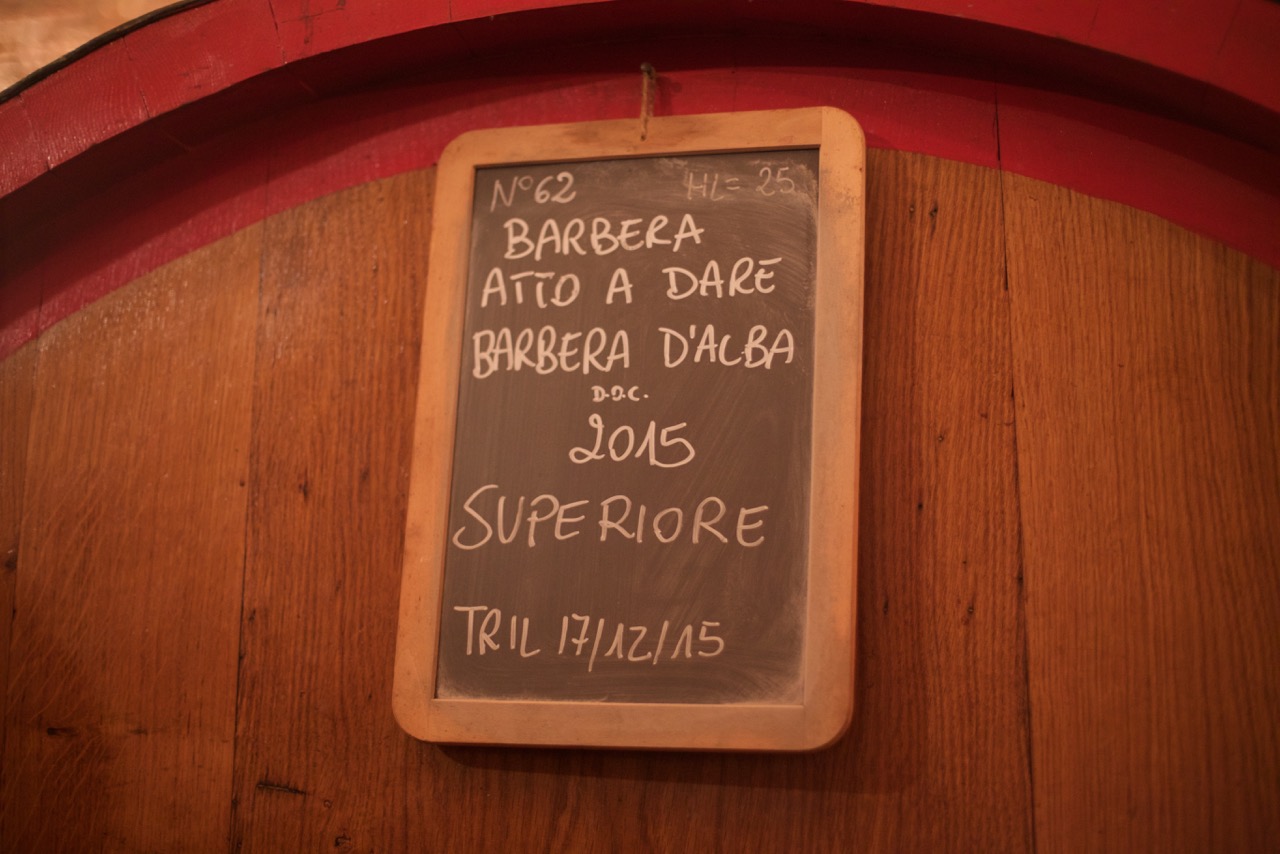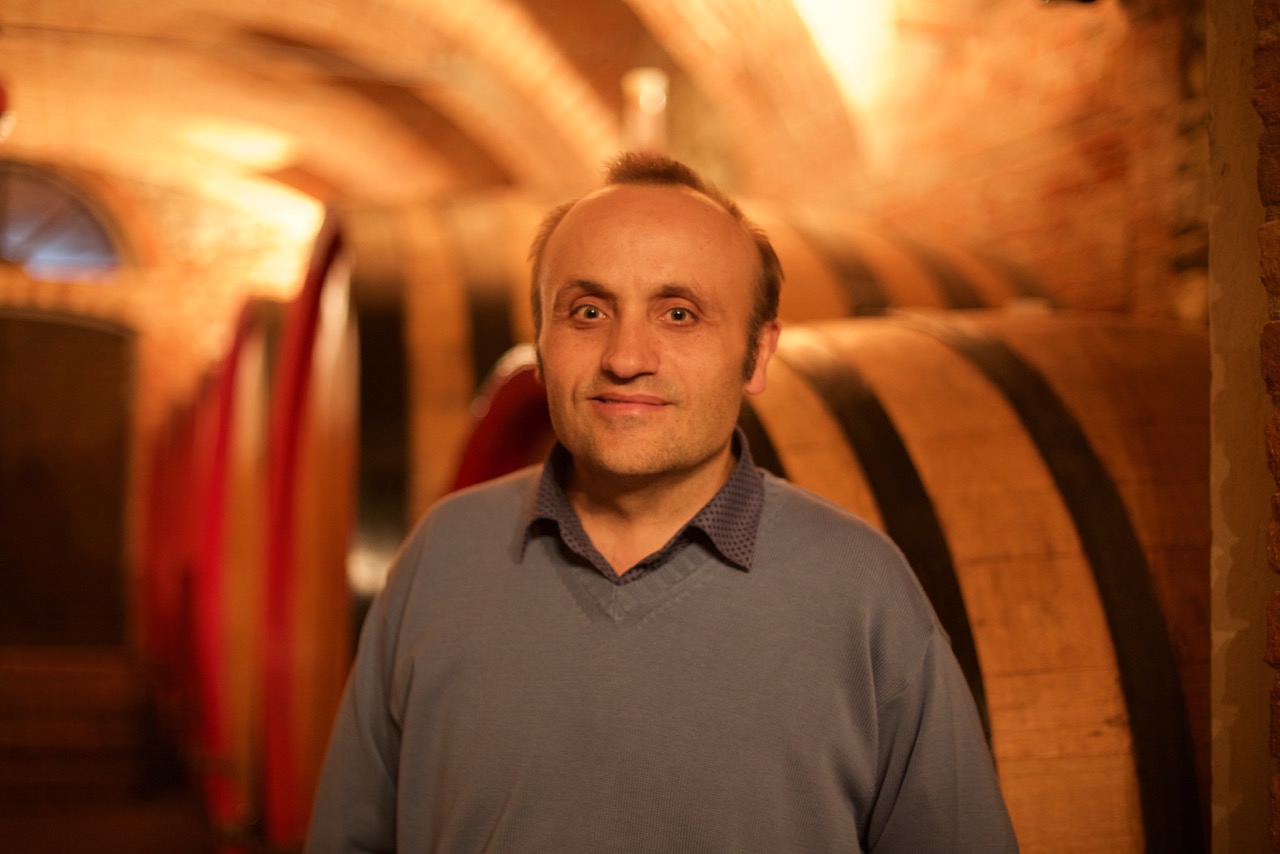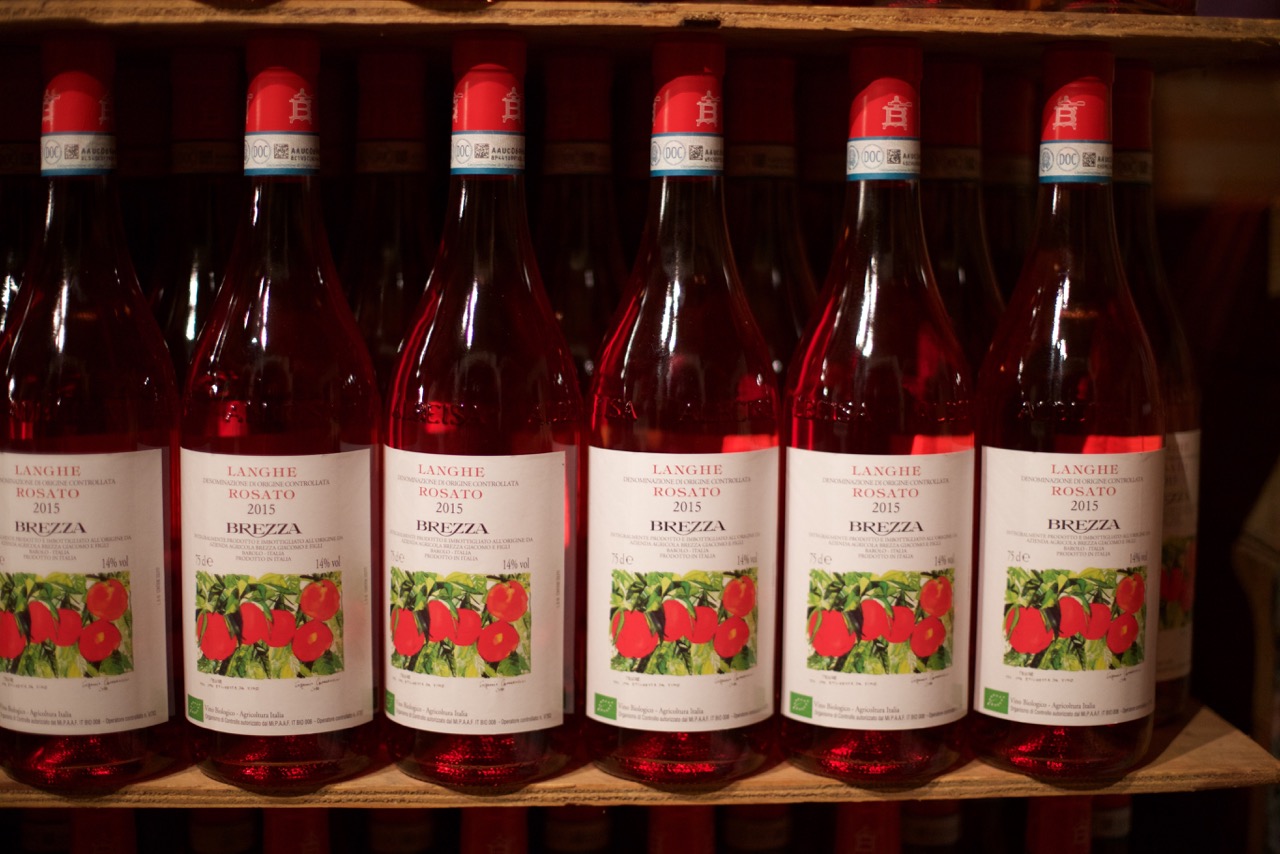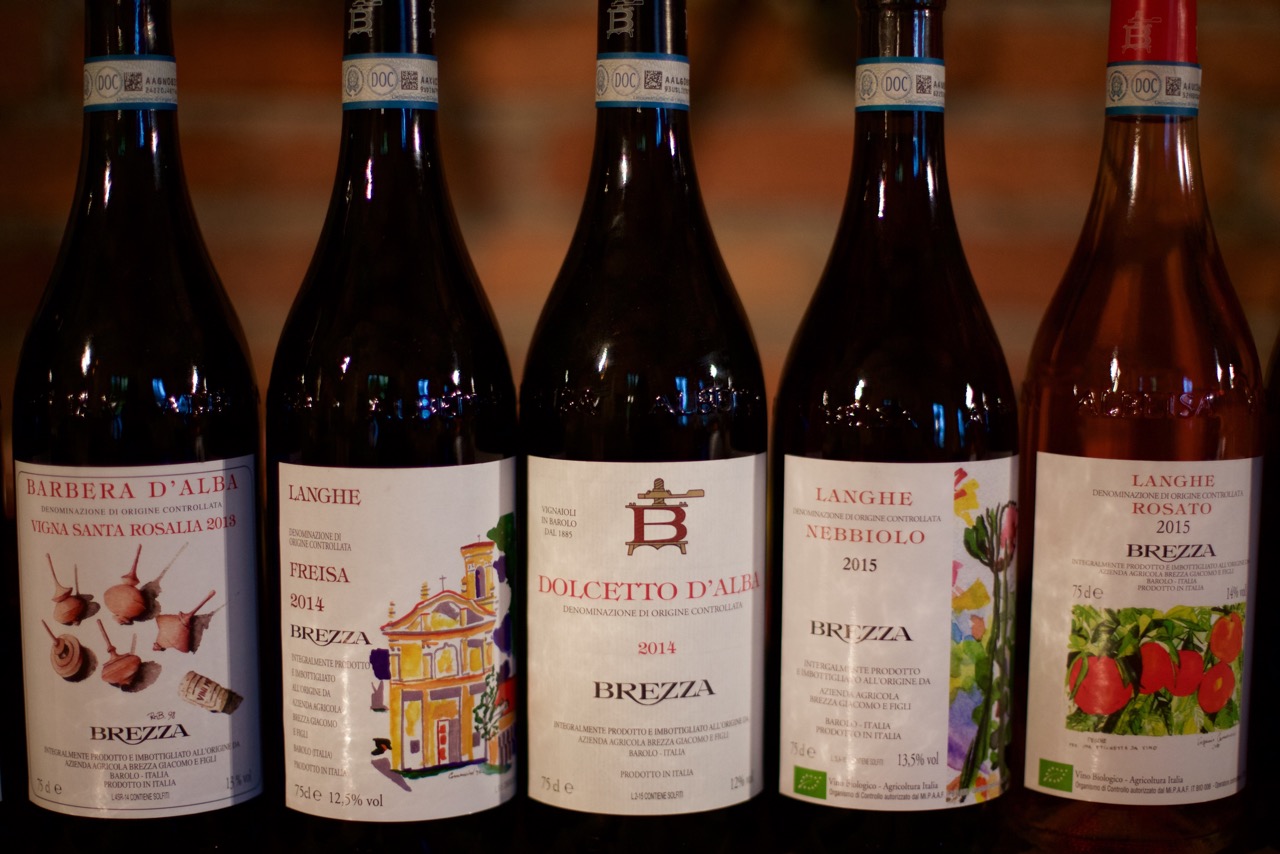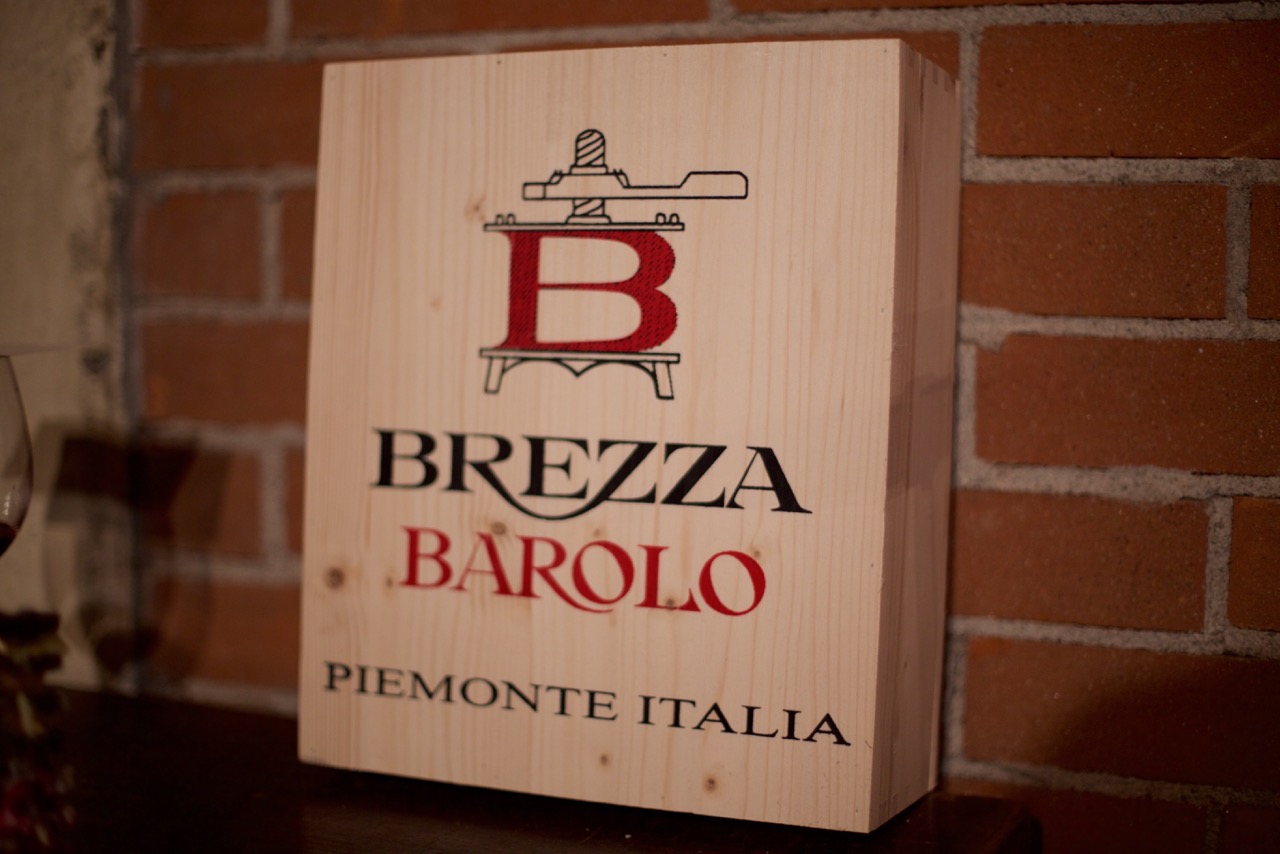Brezza
_____________________________________________
All organic viticulture, certified and labeled
Transparent, terroir-forward winemaking
Historic producer - over four generations
_____________________________________________
About Brezza:
The Brezza estate, which includes part of the renowned Cannubi vineyard and other fine sites around the village of Barolo, has been bottling since 1910. Now run by Enzo Brezza and his cousin Francesco, the fourth and fifth generations of the family to make wine here, Brezza’s wines are icons of traditional winemaking: organic grape growing, long macerations, and aging in large barrels. This transparent style, applied consistently and cleanly across the different bottlings, allows the differences of the site to become clear, with no new oak aromas or rusticity getting in the way.
There is a range of styles of Barolo grown around the different villages that make up the whole Barolo appellation. (Barolo is both the name of the appellation and the name of one of the villages within it.) The area can be divided into two parts, the western part (including La Morra, Barolo, Verduno, and Novello) where the soil is ‘calcareous marls of the Tortonian epoch which are relatively compact, fresher, and more fertile’ (Oxford Companion to Wine), producing wines that are relatively elegant, fruity, and drinkable when young.
The eastern part (Castiglione Falletto, Monforte, and Serralunga), where the soil is ‘from the Serravallian epoch, with a higher proportion of compressed sandstone, less compact, poorer, and less fertile…’ (OCW), produces wines that are firmer in structure and take longer to mature. (Castiglione is in fact on the ‘seam’ between the two types, and produces wines that are between the two styles.) The wines grown in the village of Barolo are typically more structured than those from La Morra, but less so than those from Castiglione, Monforte, and Serralunga.
These are some of the best Barolos being made. (Kerin O’Keefe, in her excellent book Barolo and Barbaresco, describes Brezza as a 'fine producer of Barolo.')
Most Nebbiolo d’Alba we see comes from the Roero area, but this excellent example is from just south of the town of Alba, just outside the Barolo zone. It’s aged in large barrels for about a year; and it shows unmistakable Nebbiolo notes, yet with none of the chewiness of Barolo; rose-petals, red-currants, sandalwood, true cinnamon, Pinot-like fruit, and drinkable when released. Perfect with red meats, many pasta dishes, roast chicken…
Brezza also produces a lovely Chardonnay. Grown in soil that contains a high proportion of silt and sand, this Chardonnay is fermented and aged in stainless steel. The soil gives the wine minerality, structure, and aromas of flowers and yellow fruit.
_____________________________________________
The barolos:
Barolo DOCG
Brezza’s regular bottling of Barolo is made of fruit from estate vineyards in Novello, Monforte, and Barolo itself. It’s textbook Barolo; it’s relatively forward for the appellation. I age this wine but you could absolutely drink it early with red meat or cheese too. Delicious is not usually a word I’d use for Barolo but this is in fact delicious.
Barolo ‘Cannubi’ DOCG
The Cannubi vineyard is ‘perhaps the most historic cru in all of Barolo,’ according to Kerin O’Keefe; it’s certainly the best known. Enzo Brezza is one of the producers (along with his cousin, Maria Teresa Mascarello), who have insisted that the Cannubi name be used only for the historic vineyard itself, and not the area around it, as other producers have suggested.
The best wines from Cannubi are perfumed, elegant in structure, complex, and distinctive, and Brezza’s bottling is a great example. For Barolo, one of the world’s most age-worthy red wines, these wines are relatively drinkable young, but they age superbly.
Barolo ‘Sarmassa’ DOCG
The Sarmassa vineyard has more clay in the soil than Cannubi, and less sand. ‘This cru sits on the opposite side of the main Barolo ridge from Cannubi, and yet it has a distinct microclimate…it is the first area where snow melts in the winter. Altitudes range from 250 to 300 meters (820 to 980 feet), and plant ages range between twelve and seventy years old.’
The wines grown here are more structured than those from Cannubi; the vineyard is not as well known as Cannubi, but I think Brezza’s Sarmassa is outstanding.
Barolo ‘Castellero’ DOCG
The Castellero vineyard is 'located in the village of Barolo at an altitude of 300 meters (980 feet) above sea level. The site enjoys southern exposures while the soil is a mixture of sand, silt, and clay, with a higher percentage of sand’ than either of the two other crus.
everyday Wines:
Nebbiolo, Langhe Doc
Enzo Brezza also makes two everyday Nebbiolos that show the elegant, fruit-forward side of the variety. The Langhe Nebbiolo is from vineyards around the village of Barolo, which have been declassified. It’s aged only in stainless steel, and bottled in spring following the vintage; as Enzo says ‘We want this wine to represent Nebbiolo in its youth, helped by the closure (a glass stopper) and the label, which shows a poppy, the flower that in June turns our hills red and lets our imagination fly on wings of freshness.’ Lovely words, lovely wine.
Freisa, Langhe Doc
Freisa is an indigenous Piedmontese variety that is underestimated. Ian d’Agata: ‘Freisa can give magnificent wines, which shouldn’t be surprising, given it is a very close relative of Nebbiolo…Its perfume…is haunting and complex, its crisp strawberry and sour red-cherry flavors memorable.' Regarding their Freisa, Brezza remarks, ‘Many Piedmontese Freisas are made in a half-sparkling style, but this one is completely still, dry, and well-structured. It should be drunk young; it’s excellent with salumi or other rich foods, due to its dry structure. It’s normally consumed young but will hold up fine for three or four years.’
Dolcetto D’Alba DOC
Brezza also produces a number of wines made with other grapes typical to Piedmont, including Dolcetto, Barbera and Freisa. I love Dolcetto, and I drink a lot of it. Aged in stainless steel and cement tanks, no wood, this is a crimson, fruity, perfumed, drinkable version of a grape that can have a fair amount of structure. Drink it young, for vibrant fruit flavors balanced by a faint tealeaf dryness that makes the wine perfect with a wide range of food.
barbera d’Alba Doc, ‘Vigna santa rosalia’
Rosato, Langhe Doc
_____________________________________________
more information:
Visit the Brezza Website
More about Piemonte
